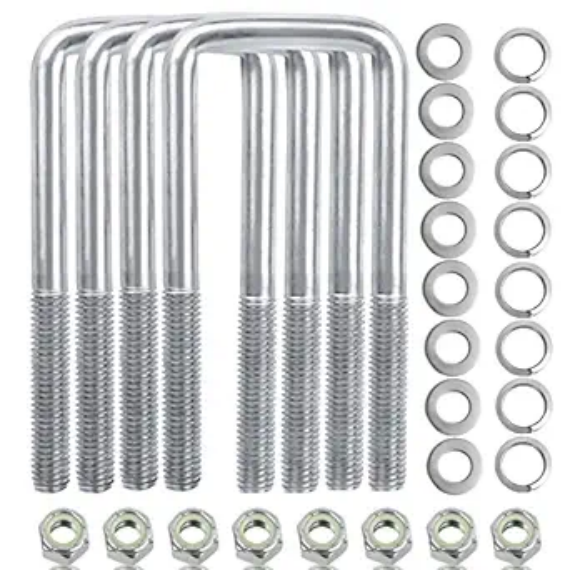

The Importance of Ball Stud Bolts in Mechanical Applications and Their Benefits
Nov . 06, 2024 16:11 Back to list
The Importance of Ball Stud Bolts in Mechanical Applications and Their Benefits
Understanding Ball Stud Bolts An Overview
Ball stud bolts are a specialized type of fasteners that play a crucial role in various mechanical applications, particularly where pivoting or rotational movement is required. They are designed with a spherical head, resembling a ball, which allows for the dynamic movement necessary in many machinery and automotive components. This article aims to provide a comprehensive understanding of ball stud bolts, their design, applications, advantages, and installation techniques.
Design and Construction
The defining feature of a ball stud bolt is its spherical head, which is typically affixed to a threaded shank. The ball head is usually made of high-strength materials such as steel or alloy, which ensures durability and resistance to wear. The threaded portion allows for secure attachment to other components, making them versatile in various systems. The precise dimensions and tolerances are crucial for ensuring that the ball stud functions effectively without excessive play or looseness, which could lead to mechanical failure.
These fasteners can vary in size and specifications to suit different applications. For instance, automotive ball studs are designed for use in suspension systems, while industrial versions may be integrated into manufacturing machinery. The choice of materials, coatings, and finishes can also affect their performance, with options available for corrosion resistance in harsh environments.
Applications
Ball stud bolts find applications in numerous industries, including automotive, aerospace, and manufacturing
.1. Automotive Industry In vehicles, ball studs are commonly used as part of suspension systems, allowing for smooth movement and articulation. They adapt to the dynamic conditions of the road, providing stability and control. Moreover, ball studs are found in adjustable elements like hitches and brackets, where angular adjustment is necessary.
2. Aerospace In aerospace applications, the need for lightweight, strong, and reliable components is paramount. Ball stud bolts are employed in aircraft assemblies where movement and pivoting are essential. Their ability to withstand extreme conditions, including temperature fluctuations and vibration, makes them ideal for such applications.
3. Manufacturing Machinery In industrial settings, ball studs are often used in robotic arms, conveyor systems, and various automation equipment. Their design allows for versatile movement while maintaining alignment, contributing to the efficiency and functionality of manufacturing processes.
Advantages
ball stud bolt

The advantages of using ball stud bolts are numerous
- Versatility Their design accommodates various movement types, making them suitable for dynamic applications. - Durability Made from high-quality materials, ball studs can endure significant forces and resist wear over time. - Ease of Installation Ball studs can be easily threaded into place, providing a straightforward solution for assembly in complicated systems. - Adjustability Many designs allow for angular adjustments, making them adaptable to changing conditions or requirements.
Installation Techniques
The installation of ball stud bolts requires attention to detail to ensure optimal performance. Here are some key considerations
1. Preparation The installation site should be clean and free from debris. Inspect the ball stud and the mating components for any signs of wear or damage before starting.
2. Alignment It is essential to ensure that the ball stud is aligned correctly with the components it will be connecting. Misalignment can lead to premature wear or failure.
3. Tightening Use a torque wrench to tighten the ball stud to the manufacturer’s specifications. Over-tightening can damage the threads or the components involved, while under-tightening can lead to loosening over time.
4. Testing After installation, it’s advisable to test the assembly under controlled conditions to ensure that the ball stud functions correctly without any undue noise or play.
Conclusion
In summary, ball stud bolts are an integral component across multiple industries, providing the flexibility and strength required in dynamic applications. Their unique design facilitates smooth movement, making them indispensable in systems that rely on regular articulation. Understanding their characteristics, applications, and installation methods is crucial for engineers and technicians looking to leverage the benefits of ball stud bolts in their projects. As technology advances, the development of new materials and designs will likely enhance the performance and durability of these essential fasteners, continuing to play a vital role in modern machinery and automotive systems.
Latest news
-
Hot Dip Galvanized Bolts-Hebei Longze|Corrosion Resistance&High Strength
NewsJul.30,2025
-
High-Strength Hot-Dip Galvanized Bolts-Hebei Longze|Corrosion Resistance&High Strength
NewsJul.30,2025
-
Hot Dip Galvanized Bolts-Hebei Longze|Corrosion Resistance&High Strength
NewsJul.30,2025
-
Hot Dip Galvanized Bolts - Hebei Longze | Corrosion Resistance, High Strength
NewsJul.30,2025
-
High-Strength Hot Dip Galvanized Bolts-Hebei Longze|Corrosion Resistance, Grade 8.8
NewsJul.30,2025
-
Hot Dip Galvanized Bolts-Hebei Longze|Corrosion Resistance,High Strength
NewsJul.29,2025

